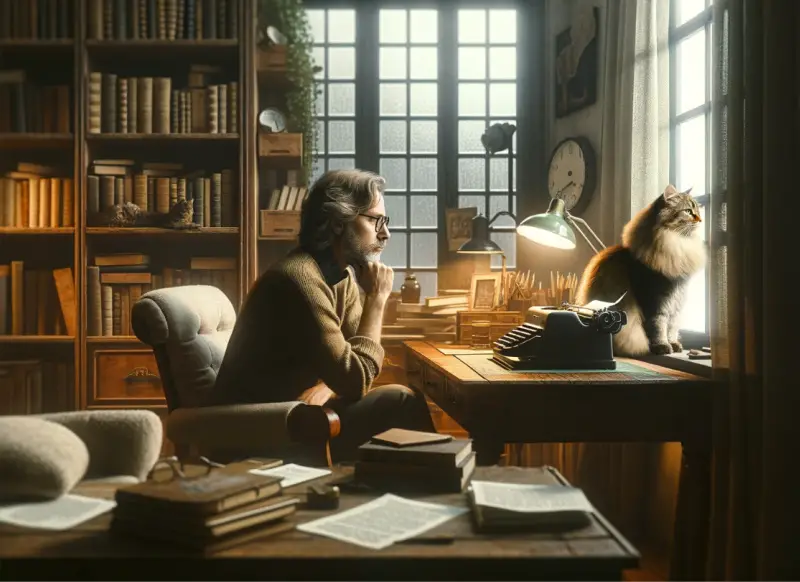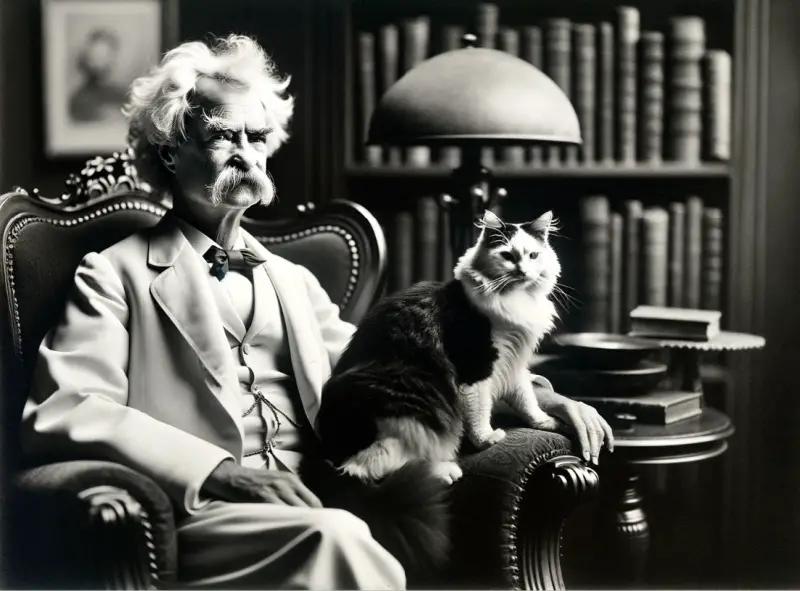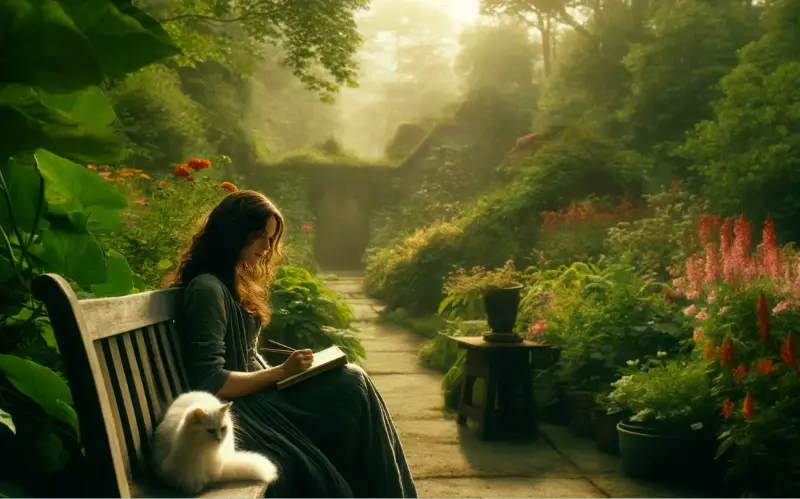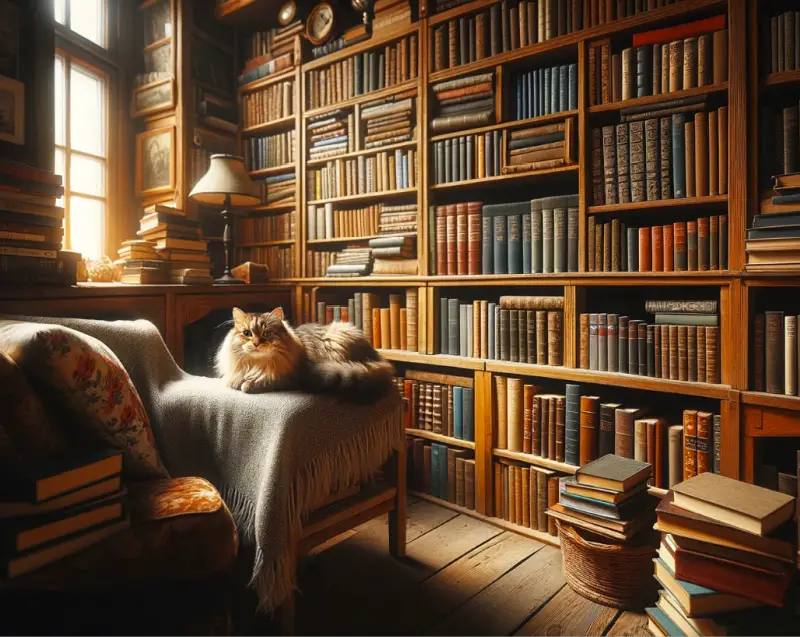Writers and cats share a special bond that has fascinated and inspired people for generations. From classic literature to modern-day authors, cats have played a pivotal role in the creative lives of many writers. This unique relationship can be attributed to a variety of factors, including the calming presence of cats, their mysterious and independent nature, and the inspiration they provide.
A Historical Perspective
Throughout history, many renowned writers have had feline companions. These cats were not just pets; they were muses, confidants, and sources of comfort during the often solitary and stressful process of writing. One of the earliest examples is Edgar Allan Poe, whose beloved cat, Catterina, was said to have been a source of solace and inspiration for him. Similarly, Mark Twain was a known cat lover, often seen with his numerous cats, whom he regarded as intelligent and charming creatures.
In the 20th century, cats continued to captivate the literary world. Ernest Hemingway’s home in Key West, Florida, is famous for its population of polydactyl (six-toed) cats, descendants of Hemingway’s own feline friend, Snowball. These cats have become a symbol of Hemingway’s legacy and are a testament to his deep affection for his feline companions.
The Calming Presence of Cats
One of the reasons writers are drawn to cats is their calming presence. Writing can be a stressful and mentally exhausting endeavor, and having a cat nearby can provide a sense of tranquility. The rhythmic sound of a cat’s purr is known to have a soothing effect, reducing stress and anxiety. This calming influence can help writers focus on their work and maintain a steady creative flow.
Cats are also low-maintenance pets, requiring less attention than dogs. This independence allows writers to concentrate on their work without constant interruptions. A cat may curl up on a writer’s lap or perch on a nearby windowsill, offering companionship without demanding too much attention. This unobtrusive presence can be comforting, creating a peaceful environment conducive to creativity.
Inspiration in Mystery and Independence
Cats are often regarded as mysterious and enigmatic creatures, qualities that can be intriguing to writers. Their independent nature and graceful movements can evoke a sense of wonder and curiosity. Writers are naturally drawn to the unknown, and the mystique of cats can spark their imagination.
The independent spirit of cats also resonates with the solitary nature of writing. Writers often spend long hours alone, immersed in their work. Having a cat as a companion can provide a sense of solidarity. The cat’s presence can remind the writer that they are not entirely alone, even during the most isolated moments of their creative process.
Feline Muses in Literature
Cats have not only been companions to writers but have also appeared as characters in their works. From T.S. Eliot’s “Old Possum’s Book of Practical Cats,” which inspired the musical “Cats,” to Haruki Murakami’s recurring feline characters, cats have left an indelible mark on literature. These literary felines often embody traits that resonate with the themes and emotions of the stories they inhabit.
Eliot’s whimsical and insightful poems about cats capture their quirky personalities and endearing qualities. Murakami’s cats, on the other hand, often serve as symbols of mystery and the supernatural, reflecting the surreal and enigmatic nature of his writing. These examples illustrate how cats can enrich literary works, adding depth and complexity to the narratives.
Modern-Day Writers and Their Cats
The bond between writers and cats continues to thrive in the modern literary world. Many contemporary authors share their lives with feline companions and often express their admiration for these creatures. Neil Gaiman, a prolific writer known for his fantasy and horror works, frequently mentions his cats in interviews and social media posts. His cats provide companionship and inspiration, often finding their way into his stories.
Similarly, Haruki Murakami’s love for cats is well-documented. Cats appear in many of his novels, often playing significant roles that reflect the themes of his work. Murakami’s cats are more than just pets; they are integral to his storytelling, symbolizing the mysteries of life and the complexities of human relationships.
Here are a dozen well-known writers who had cats as their muses:
- Edgar Allan Poe – His cat, Catterina, was a source of comfort and inspiration for him.
- Mark Twain – A devoted cat lover, Twain often mentioned his cats in his writings and correspondence.
- Ernest Hemingway – Famous for his polydactyl (six-toed) cats, which still inhabit his Key West home.
- T.S. Eliot – Wrote “Old Possum’s Book of Practical Cats,” which inspired the musical “Cats.”
- Haruki Murakami – Cats frequently appear in his novels, symbolizing mystery and the supernatural.
- Joyce Carol Oates – The prolific author often mentions her cats in interviews and on social media, highlighting their importance in her life.
- Neil Gaiman – A contemporary writer who often references his cats in interviews and social media, and includes them in his stories.
- Patricia Highsmith – The author of “The Talented Mr. Ripley” was known for her love of cats, often finding inspiration from her feline friends.
- William S. Burroughs – A cat lover who wrote “The Cat Inside,” a book about his deep affection for cats.
- Doris Lessing – This Nobel Prize-winning author wrote several works about cats, including “Particularly Cats.”
- Alice Walker – The Pulitzer Prize-winning author of “The Color Purple” has written about her love for cats and the companionship they offer.
- Charles Bukowski – The poet and novelist frequently included cats in his work and was known to share his home with several feline companions.
Summary
The unique bond between cats and writers is a testament to the profound impact these enigmatic creatures have on the creative process. Cats provide a calming presence, inspire with their mystery and independence, and often become muses for literary works. From historical figures like Edgar Allan Poe and Ernest Hemingway to contemporary authors like Neil Gaiman and Haruki Murakami, the relationship between writers and their feline companions continues to be a source of fascination and inspiration. As long as there are stories to be told and words to be written, it is likely that cats will remain faithful companions to the literary world, offering solace, inspiration, and a touch of mystery.





